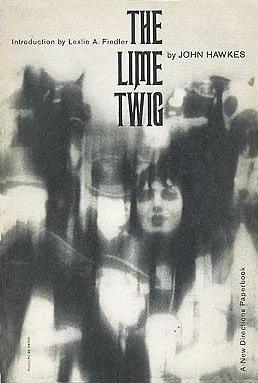What do you think?
Rate this book


175 pages, Hardcover
First published January 1, 1961
Beyond the lights of crossings it was dark, the trees bent away from the train, and Margaret felt the wobbling tracks running over the ties, and each tie crushed under the wheels became a child. Children were tied down the length of track: she saw the toads hopping off their bodies at the first whisper of wheels, the faint rattling of oncoming rods and chains, and she saw the sparks hitting the pale heads and feet. Then the steam lay behind on the tracks and the toads returned.
’Yet, whatever was to come his way would come, he knew, like this—slowly and out of a thick fog. Accidents, meetings unexpected, a figure emerging to put its arms about him: where to discover everything he dreamed of except in a fog. And, thinking of slippery corners, skin suddenly bruised, grappling hooks going blindly through the water: where to lose it all if not in the same white fog.’The confusion felt in the characters is shared by the reader, making us feel an active participant in the mayhem and menace. Flannery O'Connor wrote that ‘you suffer The Lime Twig like a dream,’ which makes for a succinct metaphor of this nightmarish narrative which twists and mutates before our eyes, often devoid of the very details that would allow us to rationalize and assess the monstrous visions before they transform into another horrific scene. As Michael Banks is powerless to control the events set up just for him, the reader is powerless to control the narrative written for them; Hawkes crafts a devilishly wild ride where all we can do is hold on tight and endure the fantastic novel that transpires like an apparition before our eyes.
‘The great difficulty Hawkes has,’ said William H. Gass in a recent interview with Tin House, ‘is to take something that is so revolting in life and write about it beautifully. That makes people mad, you know? Because they think you’re doing something, you’re advising or approving the situation, which isn’t the case. That’s one reason he liked violence. There are scenes in The Lime Twig that are so beautiful, so awful. That’s art, boy.’Gass makes a great commentary on the violence here, which is often nearly lost in the shaky visuals of the narrative, occurring right before the readers nose but hidden from them at the same time; Hawkes artfully depicts the violence by transmitting it to the reader through vague, irrepressible feelings of discomfort and terror instead of simply creating a blood bath out of words. The first death, when the horse kicks in a mans head, occurs beneath prose that never takes it’s eye off the violent event. The man ‘tries to speak, and slides suddenly into the dark of the van’, he slips into the abyss to meet his doom, as the text portrays the fear and commotion emanating from the disaster, implying the death without ever explicitly showing it. Each death is like that, and the reader almost misses it even though it happens right there, but the narrative portrays the obfuscation of fear and the motion of escape. Characters are alive, then lost in the blindspots for a moment, a bloody corpse suddenly appears from the mist, and then lost again as another matter comes into focus and all we are left with is that fear, that feeling, that abstract horror or events we cannot understand which creates a far more powerful resonance than any cold depiction of the violent act could have.
for the places [Hawkes] defines are the places in which we all live between sleeping and waking, and the pleasures he affords are the pleasures of returning to those places between waking and sleeping.